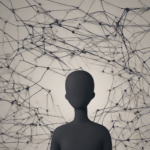Drug Addiction Cure: Understanding the Path to Recovery
Drug addiction is a complex and chronic disease characterized by compulsive drug seeking and use, despite harmful consequences. It affects individuals, families, and communities worldwide, causing significant social, economic, and health burdens. While there is no single cure for drug addiction, effective treatments and interventions can help individuals achieve long-term recovery.
Understanding Drug Addiction
Drug addiction occurs when the brain’s reward system is hijacked by drugs, leading to changes in brain structure and function. This hijacking creates intense cravings and compulsive behaviors, making it difficult for individuals to stop using drugs even when they experience negative consequences.
Factors Contributing to Drug Addiction
- Genetic predisposition: Individuals with a family history of addiction are at increased risk.
- Environmental factors: Exposure to drugs, trauma, and peer pressure can contribute to addiction.
- Mental health conditions: Co-occurring mental health disorders, such as depression or anxiety, can increase vulnerability to addiction.
- Social and economic factors: Poverty, lack of access to healthcare, and social isolation can contribute to addiction.
Signs and Symptoms of Drug Addiction
- Changes in behavior: Secrecy, withdrawal from social activities, neglect of responsibilities.
- Physical changes: Weight loss or gain, sleep disturbances, physical health problems.
- Psychological changes: Mood swings, irritability, paranoia, anxiety, depression.
- Tolerance: Needing more of the drug to achieve the desired effect.
- Withdrawal: Experiencing physical and psychological symptoms when trying to stop using.
Treatment Approaches
Drug addiction treatment aims to address the biological, psychological, and social aspects of the disease. It typically involves a combination of approaches, including:
1. Medications
- Opioid agonist therapy (OAT): Medications like methadone and buprenorphine reduce cravings and withdrawal symptoms, helping individuals stabilize and reduce their risk of relapse.
- Naltrexone: Blocks the effects of opioids, reducing cravings and preventing relapse.
- Acamprosate: Helps reduce alcohol cravings and withdrawal symptoms.
2. Behavioral Therapies
- Cognitive Behavioral Therapy (CBT): Helps individuals identify and change negative thoughts and behaviors that contribute to addiction.
- Contingency Management: Rewards positive behaviors, such as abstinence from drug use, to motivate change.
- Motivational Interviewing: Helps individuals explore their reasons for change and develop a plan for recovery.
3. Support Groups
Support groups, such as Alcoholics Anonymous (AA) and Narcotics Anonymous (NA), provide a safe and supportive environment for individuals in recovery to share their experiences, learn coping strategies, and connect with others who understand what they are going through.
4. Holistic Therapies
Some individuals find that incorporating holistic therapies, such as yoga, meditation, or acupuncture, can enhance their recovery journey.
Relapse Prevention
Relapse is a common part of the recovery process. It is important to recognize that relapse is not a failure, but an opportunity to learn and adjust treatment strategies. Strategies for relapse prevention include:
- Developing coping mechanisms: Learning healthy ways to manage stress, triggers, and cravings.
- Building a support system: Connecting with family, friends, and support groups for encouragement and accountability.
- Avoiding high-risk situations: Identifying and avoiding places, people, and activities that trigger cravings.
- Engaging in healthy activities: Participating in hobbies, exercise, and social activities that promote well-being.
- Seeking help immediately: Recognizing the warning signs of relapse and reaching out for support.
The Path to Recovery
Recovery from drug addiction is a lifelong journey that requires commitment, support, and ongoing effort. It is important to remember that:
- Recovery is possible: Many individuals have successfully overcome addiction with the right treatment and support.
- There is no shame in seeking help: Addiction is a disease, and seeking treatment is a sign of strength and self-care.
- Recovery takes time and effort: The journey to recovery is not always easy, but it is worth it.
- Support is crucial: Connecting with loved ones, support groups, and professionals can make a significant difference.
- Focus on the present moment: Celebrating successes and learning from setbacks can help maintain focus on recovery goals.
Resources and Support
There are numerous resources available for individuals seeking help with drug addiction and their loved ones:
- National Institute on Drug Abuse (NIDA): Provides evidence-based information, research, and treatment resources.
- Substance Abuse and Mental Health Services Administration (SAMHSA): Offers a national helpline, treatment locator, and other support services.
- Alcoholics Anonymous (AA): A worldwide organization that offers peer support and guidance for individuals recovering from alcohol addiction.
- Narcotics Anonymous (NA): A similar organization focused on supporting individuals recovering from addiction to drugs.
- Local addiction treatment centers: Offer a range of services, including detoxification, therapy, and medication-assisted treatment.
If you or someone you know is struggling with drug addiction, please reach out for help. Recovery is possible, and there is support available.








